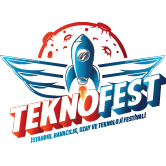The research article “Decoding infrastructural terrain: the landscape fabric along the Sincan-Kayaş commuter line in Ankara”, co-authored by METU members Lech. Dr. Funda Baş Bütüner and Assoc. Prof. Hacer Ela Aral, has been published in Landscape Research.
The rise of railways as urbanistic and landscape opportunities has generated new tracks in theory and practise. Apart from being decisive in the formation and development of the urban fabric, railways have also manipulated rural and urban landscape. With their surrounding land and integrated (sub)(infra)structure, they manifest infrastructural terrain where the interrupted relation amongst city, landscape and human can be rediscovered. Hence, this article intends to decode the infrastructural terrain along the Sincan-Kayaş commuter line in Ankara (Turkey) and reflect on the fragmentation of the landscape fabric in order to appreciate the currently existing landscape fragments: linearscapes, heritage lands and desolate lands. By means of these three types, the commuter line, currently forming an urban obstacle, might be revealed as a reference for integrative infrastructural terrain introducing a new urban landscape agenda for Ankara.
Baş Bütüner, F., Çavdar Sert, S., & Alanyalı Aral, E. (2020). Decoding infrastructural terrain: The landscape fabric along the sincan-kayaş commuter line in ankara. Landscape Research, 45(6), 724-741. doi:10.1080/01426397.2020.1740663
Article access: https://www.tandfonline.com/doi/full/10.1080/01426397.2020.1740663
Lech. Dr. Funda Baş Bütüner |
Web of Science/Publons Researcher ID: AAZ-9245-2020 |
| fbutuner@metu.edu.tr | Scopus Author ID: 57209712247 |
| About the author | ORCID: 0000-0002-6203-9002 |
Assoc. Prof. Hacer Ela Aral |
|
| earal@metu.edu.tr | Scopus Author ID: 57216201612 |
| About the author | ORCID: 0000-0002-6676-4404 |
Keywords:
Ankara; Infrastructural terrain; landscape fabric; landscape infrastructure; railway
Other authors:
Çavdar Sert, S.
Acknowledgments:
Post-doctoral research of the first author, entitled ‘Urban Railways and Landscape: Towards an Integrated System’, at Bauhaus University (Weimar), supported by The Scientific and Technological Research Council of Turkey (TUBITAK) under Grant 2219. The first author would like to thank Prof. Dr. Frank Eckardt, who kindly mentored her during her research period.










